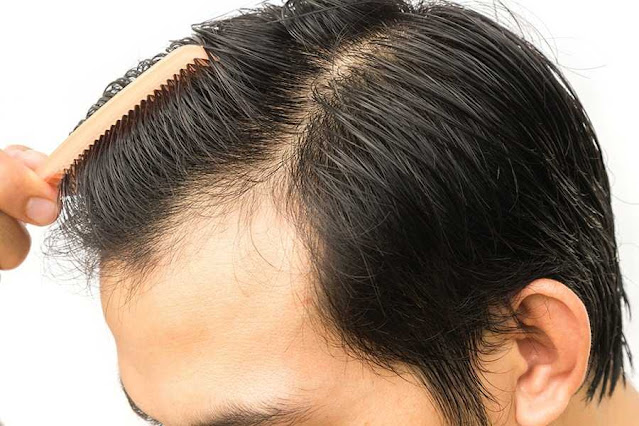According
to the best hair transplant in India,
Hair transplantation entails extracting small punch grafts from the
hair-bearing scalp or cutting a bigger section of the donor scalp into smaller
pieces for use as grafts. These grafts are then transplanted to a bald or
thinning scalp area.
The
grafts made in this way are all different sizes and shapes. Around 10-15 hairs are frequently present in
round-shaped punch grafts. The micro-graft comprises one to two hairs, whereas
the mini-graft has two to four hairs. Slit grafts comprise four to ten hairs
each and are put into slits formed in the scalp; strip grafts are long and thin
and include 30-40 hairs.
To
attain appropriate fullness, numerous surgical treatments may be required, with
a healing gap of several months advised between each operation. With a full
transplant series, it could take up to two years to see the ultimate result.
The
amount of coverage you'll need is partly determined by your hair's colour and
structure. Hair that is coarse, grey, or light-colored provides more coverage
than fine, dark-colored hair. The number of large plugs implanted in the
initial session varies from person to person, but the average is around 50.
The
number of mini-grafts or micro-grafts per session can be as high as 700.
● The grafts
are spaced about one-eighth of an inch apart to preserve good scalp
circulation. Additional grafts will be used to fill in the gaps between the
plugs in subsequent sessions. When removing and placing grafts, your doctor
will take great care to ensure that the transplanted hair grows in a natural
direction and that hair development at the donor location is not harmed.
● The scalp
will be washed and wrapped with gauze after the grafting operation is over. For
a day or two, you may need to wear a pressure bandage. Some doctors enable their
patients to heal without the use of bandages according to the best hair transplant in Kolkata.
Tissue
Expansion:
Tissue
expansion is another method for treating baldness. Tissue expansion, a method
often employed in reconstructive surgery to mend burn wounds and traumas with
severe skin loss, is a specialty of plastic surgeons. Its use in hair
transplant surgery has had tremendous results, providing considerable covering
in a short period of time.
A
tissue expander, a balloon-like device, is implanted beneath hair-bearing scalp
that is adjacent to a bald spot in this treatment. Over the course of weeks,
the device is gradually inflated with salt water, causing the skin to expand
and develop new skin cells. This results in a bulge beneath the hair-bearing
scalp, which can be rather noticeable after a few weeks.
Another
technique is conducted to pull the extended skin across to cover the
neighbouring bald spot once the skin beneath the hair has stretched
enough—usually around two months after the first operation. To learn more about
tissue expansion, request a copy of the American Society of Plastic Surgeons,
Inc. brochure Tissue Expansion: Creating New Skin from Old from your plastic
surgeon.
Flap
Surgery:
For
more than 20 years, scalp flap surgery has been conducted effectively. This
method can swiftly cover huge regions of baldness and is tailored to the needs
of each patient. The flap's size and placement are mostly determined by the
patient's goals and needs. A single flap can replace 350 or more punch grafts.
A
flap of hair-bearing skin is raised off the surface while still attached at one
end, and a portion of bald scalp is cut away. While staying
"tethered" to its original blood supply, the hair-bearing flap is
moved into its new position and sewed into place. As you recuperate, you'll
find that repositioned hair grows to the very border of the incision, which
camouflages—or at least obscures—the scar.
Scalp
Reduction:
Because
pieces of hair-bearing scalp are dragged forward or "advanced" to
fill in a bald crown, this procedure is sometimes referred to as advancement
flap surgery. Scalp reduction is used to hide bald spots on the head's top and
rear. It is not suitable for frontal hairline covering.
A
section of bald scalp is removed after a local anaesthetic is injected into the
scalp. Depending on the patient's goals, the pattern of the scalp portion
removed varies greatly. Doctors typically remove a portion of scalp in an
inverted Y-shape if a great amount of covering is required.
Excisions
can also be in the shape of a U, a pointed oval, or any other shape. The skin
around the cut-out area is relaxed and tugged, allowing the hair-bearing scalp
parts to be brought together and stitched together. At this stage, you're
likely to feel a significant tugging as well as some pain.
Procedure
Steps-
Before: Candidates for hair transplants should
have some visible hair loss and good hair growth on the back and sides of the
head to serve as donor sites.
Step 1:
Round
grafts are punched from the donor location and implanted in the area where hair
replacement is needed using a tube-like tool.
Step 2:
Round
grafts are punched from the donor location and implanted in the area where hair
replacement is needed using a tube-like tool.
Step 3:
The
skin underlying the hair is surgically put over the bald area once it has
stretched enough.
Step 4:
During
flap surgery, a section of bald scalp is cut out and a flap of hair-bearing
skin is sewn into its place.
Step 5:
Scalp
reduction techniques vary greatly, but they all have the same purpose of
bringing hair transplant in India
and scalp together to conceal bald spots.
After: Hair transplant surgery can improve your
appearance and boost your self-esteem.




















